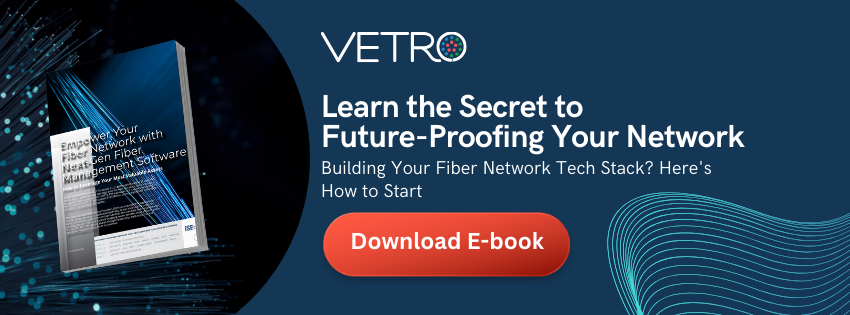From Lag to Lightspeed: How Software Supercharges FTTH Deployment
Fiber-To-The-Home (FTTH) technology is rapidly transforming the telecommunications landscape. By delivering unparalleled bandwidth and ultra-low latency, FTTH empowers homes with the connectivity needed to support today’s demanding applications, from seamless video streaming to cloud gaming and beyond. However, building and deploying a robust FTTH network is a complex undertaking. Here’s where advanced fiber network management software emerges as a game-changer, accelerating deployment and ensuring a smooth transition for internet service providers (ISPs).
The Challenges of FTTH Deployment
While the benefits of FTTH are undeniable, several challenges can hinder its deployment on a large scale. Here are some key obstacles ISPs face:
Planning and Design: FTTH networks are intricate, involving meticulous planning for cable routes, equipment placement, and ensuring optimal coverage. Traditional methods, relying on manual calculations and paper-based maps, are time-consuming and error-prone.
Resource Management: Deploying an FTTH network requires coordinating a multitude of resources: personnel, materials, and permits. Without efficient management, delays and cost overruns can quickly arise.
Field Operations: Efficient field operations are crucial for successful deployment. Streamlining tasks like assigning technicians, tracking equipment, and managing real-time progress can be a logistical nightmare without proper software support.
Integration and Visibility: Managing a growing FTTH network requires real-time visibility into network performance, resource utilization, and customer service metrics. Integrating disparate data sources into a unified platform remains a challenge for many ISPs.
How Advanced Software Streamlines FTTH Deployment
Fiber network management software empowers ISPs to overcome these challenges by offering a suite of functionalities that streamline the entire FTTH deployment process. Here’s a breakdown of the key benefits:
Automated Design and Optimization: Software can leverage Geographic Information Systems (GIS) data to automate network planning. This includes generating optimal fiber paths, identifying optimal placement for distribution points, and calculating cable lengths.
Data-Driven Decision Making: Advanced analytics capabilities within the software can analyze existing infrastructure, subscriber density, and potential obstacles to create data-driven deployment plans. This helps prioritize areas for initial rollout and optimize resource allocation.
Enhanced Resource Management: Fiber network management software can act as a central hub for coordinating resources. Features like automated scheduling, task assignment, and real-time resource tracking enable efficient deployment and improved field crew productivity.
Improved Collaboration and Visibility: These platforms facilitate seamless collaboration between design teams, construction crews, and customer service personnel. Real-time data dashboards provide transparency into the deployment progress, potential issues, and resource utilization.
Streamlined Permitting and Approvals: Software can integrate with permitting authorities, streamlining the application process and tracking approvals. This reduces delays and expedites the deployment timeline.
Specific Software Solutions:
-
Design and Planning Tools: Software like VETRO has Geographic Information System (GIS) platforms and fiber network design tools can automate infrastructure planning, optimize network layouts, and generate detailed construction documents.
-
Network Inventory Management Systems: These systems maintain a comprehensive record of all network assets, including fiber cables, distribution points, and subscriber connections. This centralized repository simplifies maintenance and troubleshooting tasks.
The Economic Benefits of Software-Driven FTTH Deployment
Implementing advanced fiber network management software can significantly enhance the economic viability of FTTH projects. Here are some key benefits:
-
Reduced Costs: By optimizing network design, resource allocation, and field operations, software can help ISPs reduce overall deployment costs. Automated processes minimize human error and streamline workflows, further contributing to cost savings.
-
Faster Deployment: Streamlined workflows and improved collaboration lead to faster completion of FTTH deployment projects. This translates to quicker revenue generation for ISPs and faster access to high-speed internet for customers.
-
Improved Customer Satisfaction: Faster deployments and enhanced network performance lead to increased customer satisfaction. Additionally, software can facilitate proactive maintenance, minimizing network downtime.
About VETRO
At VETRO, we believe visualizing data unlocks hidden potential, radically simplifying the way businesses operate and digitizing the future of connectivity. We focus on empowering network operators with unparalleled clarity and control over their fiber networks, enabling them to move faster, better, and more efficiently than ever before. Our revolutionary platform isn’t just software – it’s the physical network asset system of record, offering unprecedented visibility and control from strategic planning to daily operations. We empower our customers to bridge the digital divide at a rapid pace, unlock unforeseen opportunities, and squeeze the maximum value from their networks. Let’s illuminate the unseen, digitize the way we connect, and shape the future of connectivity, together.




